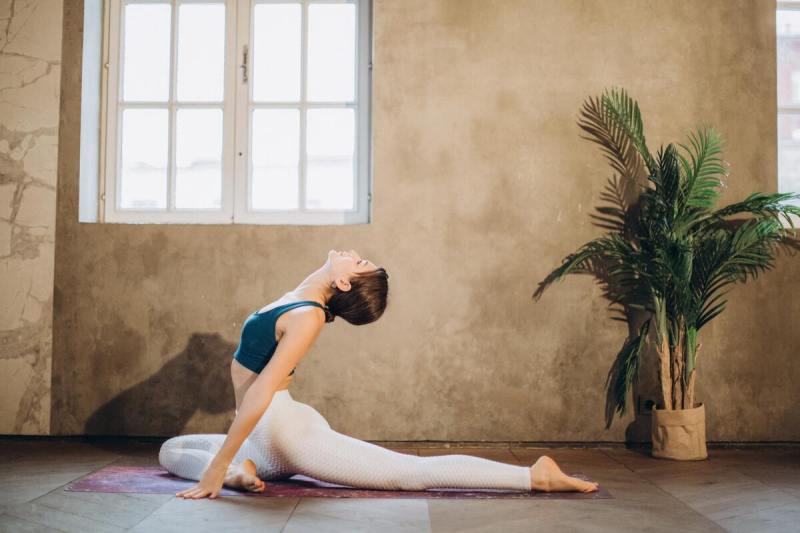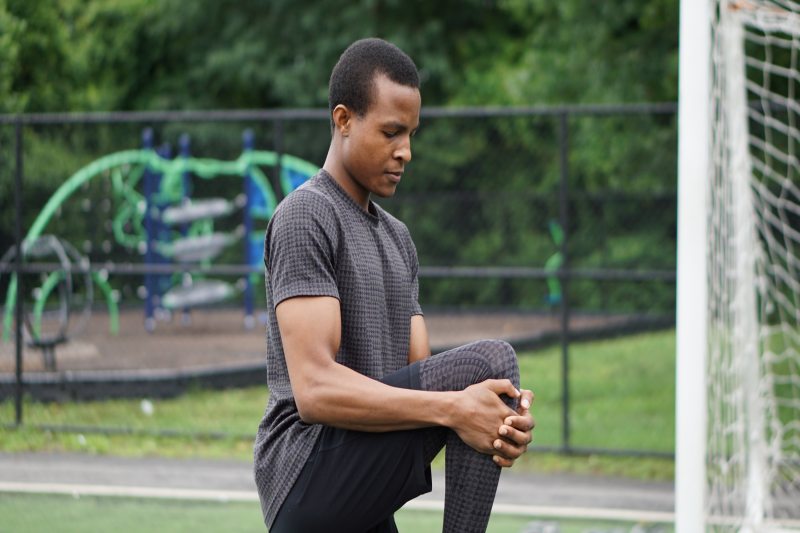
Modern life includes long hours of sitting down, which can leave the hip muscles feeling tight and restricted. Incorporating targeted stretches into an exercise routine can help alleviate discomfort, enhance flexibility, and improve overall hip health.
Efficient exercises, such as the hip flexor stretch, can target the muscles that play a pivotal role in hip mobility and posture. Hip tightness can cause pain and discomfort, even affecting the lower back, so prevention is better than a cure.
Luckily, five simple stretches can prevent hip tightness and the chronic pain that usually accompanies this condition. Here is a list of impactful stretches for tight hips designed to improve flexibility and ease discomfort.

Signs you have tight hips
Tight hips can manifest in various ways, from discomfort during everyday activities to limited range of motion. The main signs of tightness in the hips include pain while in a lying position and the inability to extend the leg backward fully.
Pain while walking or rising from a seated position are other symptoms of hip tightness to look out for. Pain can be chronic or acute and can be triggered by any of the various actions and movements.

What causes tight hips?
Many factors contribute to tightness in the hips. They can also include occupational hazards leading to shortened hip flexors and tightened glutes, but the main causes are sedentary lifestyles, intense workouts, and repetitive movements.
Sedentary lifestyle
Being inactive can be part of everyday life, especially if it is an occupational hazard. Many people have desk jobs that involve hours of sitting at a computer for five days a week. This can create tension in the hips and stiffness.
Prolonged sitting over time can shorten hip flexor muscles and even tighten the glutes. If this occurs, then pain can become chronic over time. Stretching during breaks or when out of the work environment can prevent this from happening.
Intense workouts
Too much exercise can lead to tightness in the hips. Taking workouts to the extreme and overtraining can both lead to muscle pulls and tears. This is why warming up before an exercise routine is vital, and so is cooling down when finishing a gym session.
Recovery time is also important as this gives any injured muscles time to heal fully after your workout. Injured muscles that are continuously pushed to the limits can eventually tighten, leading to chronic pain.
Repetitive movements
Repetitive movements of the hip muscles can also lead to tension and tight muscles. This is why it is important to mix routines up in the gym and include a variety of different exercises when being active.
Riding a bike or running on a treadmill, although great for building strong lower body muscles, do include repetitive body movements that can stress the hip muscles and cause them to tighten.

5 stretches for tight hips
1. Kneeling hip flexor stretch
It is important to learn how to stretch the hip flexors properly. The kneeling hip flexor stretch does this and targets the front of your hips, particularly the hip flexor muscles, which are prone to tightening due to prolonged sitting.
Instructions:
- Begin in a kneeling position with one knee on the ground and the other foot placed forward.
- Keep your leading knee directly above your ankle, forming a 90-degree angle. Place the palms of both hands, one over the other, on the leading knee.
- Gently shift your weight forward, feeling the stretch in the front of the hip of the back leg.
- To intensify the stretch, raise your arm on the same side as the extended leg, reaching overhead.
- Hold the stretch for 20 to 30 seconds, then switch sides and repeat.
2. Beginner hip flexor stretch
This beginner-friendly hip flexor stretch helps to release tension in the front of the hips and improve overall flexibility.
Instructions:
- Kneel down with one knee on the ground and the other foot placed forward.
- Gently tuck the pelvis in and engage your glutes.
- Lean your torso forward slightly while keeping your upper body upright.
- You should feel a gentle stretch in the front of your hip.
- Hold the stretch for 20 to 30 seconds, then switch sides and repeat.
3. 90/90 hip stretch
The 90/90 hip stretch targets both the external and internal hip rotators. This exercise can provide relief for tight hips or prevent tightening from occurring.
Instructions:
- Sit on the floor with one leg bent in front of you at a 90-degree angle and the other leg extended behind you, also at a 90-degree angle. Your legs will be flat on the ground, and the shoulders should be parallel to the front leg.
- Place one hand on the ground for support.
- Slowly rotate your torso toward the bent leg, feeling the stretch in the outer hip of the extended leg. Maintain an upright posture and avoid leaning forward.
- Hold the stretch for 20 to 30 seconds, then switch sides and repeat.
4. Standing hip flexor stretch
How to stretch hip flexors without causing injury and how to stretch your hip safely should be the main concerns when stretching. The standing hip flexor stretch provides an opportunity to target the hips and hip flexors while standing in a safe and easy starting position. This is a great stretch for those who may find seated hip exercises painful.
Instructions:
- Stand with one foot forward and the other foot placed behind you.
- Bend your front knee as you gently lower your back knee towards the ground, feeling the stretch in the front of your hip. Your front knee will be at a 90-degree angle while your back leg remains straight.
- Engage your core to maintain stability and avoid arching your lower back.
- Hold the stretch for 20 to 30 seconds, then switch sides and repeat.
5. Pigeon pose
The pigeon pose is a yoga-inspired stretch that effectively targets the outer hips and glutes, providing relief from tightness.
Instructions:
- Begin in a high plank position.
- Bring your left knee towards your left hand, placing it on the ground diagonally. Try to get your left shin parallel as your body allows.
- Extend your right leg straight behind you, ensuring your hips remain squared to the front.
- Sink into the stretch, feeling the stretch in the outer hip of the bent leg.
Editors' Recommendations
- High protein fast food for a busy day: These picks won’t kill your fitness goals
- The 28-day calisthenics challenge: A complete guide
- Sound therapy to improve your workouts: does it really work?
- What is zone 2 training anyway?
- Pilates is about more than just your core — try this full-body Pilates workout



